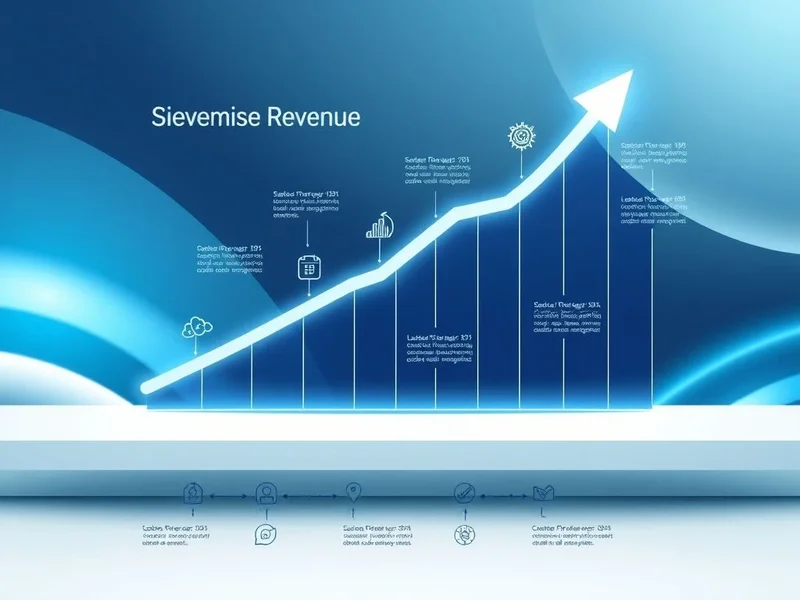Mastering the Revenue Growth Report: A Business English Guide
Do you need to show your company's financial success clearly? Or perhaps you want to understand how a business is growing? The Revenue Growth Report is a vital document in the world of business English. It explains how a company's income has increased over time. Learning to read and write this type of report is a key skill for effective workplace communication. This guide will help ESL learners like you understand its structure, language, and purpose, making you confident in professional settings.

Table of Contents
- What Is a Revenue Growth Report?
- Key Components of a Revenue Growth Report
- Sample Language & Sentence Starters
- Key Vocabulary for Your Revenue Growth Report
- Conclusion
What Is a Revenue Growth Report?
A Revenue Growth Report is a formal document showing how a company's income has changed. It explains factors causing revenue increases. The main purpose is to inform stakeholders about financial performance. This helps in future business decisions.
Companies use this report widely. Sales and marketing track campaign success. Finance uses it for budgeting. Investors rely on it for company health. It is key for business reporting across many industries.
More: Mastering the Team Efficiency Report A Guide for ESL Professionals
Key Components of a Revenue Growth Report
A well-structured Revenue Growth Report clarifies complex data. According to the Purdue OWL, effective reports often follow a logical structure. Typical sections include:
- Executive Summary: A short overview of main findings and conclusions. Highlights key growth figures.
- Introduction: States the report's purpose, scope, and period covered.
- Methodology: Explains data collection and analysis methods.
- Analysis of Revenue Streams: Detailed breakdown of income sources. Shows top contributing areas.
- Factors Driving Growth: Discusses reasons for increases, like successful campaigns or new products.
- Challenges and Opportunities: Identifies obstacles or areas for future improvement.
- Conclusion and Recommendations: Summarizes and suggests actions.
- Appendices: Includes supporting data or charts.
Always use a professional tone and clear formatting. This helps readers grasp information quickly.
More: Mastering the Manager Feedback Report: A Guide for ESL Professionals
Sample Language & Sentence Starters
Using the right phrases makes your professional writing clear. Here are examples for your Revenue Growth Report:
- For Introduction/Purpose:
- "This report presents [Company Name]'s revenue growth for [Period]."
- "The aim is to outline key drivers behind our revenue increase."
- For Presenting Data/Findings:
- "Overall revenue increased by [Percentage]%."
- "Sales from [Product/Service] rose by [Percentage]%."
- "Data indicates a positive trend."
- For Explaining Factors/Drivers:
- "Growth is attributed to [Factor]."
- "[Initiative] enhanced our market share."
- For Conclusions/Recommendations:
- "In conclusion, robust revenue growth occurred this quarter."
- "We recommend [Action]."
- "Future efforts should focus on [Opportunity]."
More: Mastering Business English How to Write a Staff Engagement Report
Key Vocabulary for Your Revenue Growth Report
Understanding specific terms helps you write and comprehend a Revenue Growth Report effectively. Here are essential words for your business English vocabulary:
| Term | Definition | Example Sentence |
|---|---|---|
| Revenue | The total income a company earns from its normal business activities. | Our quarterly revenue exceeded expectations due to strong sales. |
| Growth | An increase in size, amount, or importance over time. | The company reported a 15% growth in its annual revenue. |
| Profit | The money a business makes after paying all its costs. | Despite high revenue, the profit margin was narrow due to increased expenses. |
| Market Share | The percentage of total sales in an industry generated by a company. | The new product launch helped us gain a larger market share. |
| Sales Volume | The total number of units sold or services rendered over a period. | A higher sales volume indicates strong demand for our products. |
| Customer Acquisition | The process of gaining new customers for a business. | Effective advertising campaigns boosted our customer acquisition efforts. |
| Retention | The ability of a company to keep its existing customers. | Customer retention is crucial for long-term sustainable revenue. |
| Projection | An estimate or forecast of future trends or values. | The financial projection for next year shows continued revenue growth. |
| KPI (Key Performance Indicator) | A measurable value that shows how effectively a company is achieving its objectives. | We track several KPIs, including revenue per customer, to measure success. |
| Trend | A general direction in which something is developing or changing. | The report highlighted a positive trend in online sales. |
| Variance | The difference between an expected and an actual result. | Any significant revenue variance must be investigated promptly. |
| Strategy | A plan of action designed to achieve a long-term or overall aim. | Our growth strategy focuses on expanding into international markets. |
| Initiative | An important new plan or process to achieve a particular aim. | The new marketing initiative directly contributed to higher revenue. |
| ROI (Return on Investment) | A measure of the profitability of an investment. | The ROI of our recent advertising campaign was very impressive. |
Conclusion
Mastering the Revenue Growth Report is a valuable step in your report writing journey. You now understand its key components, common language, and essential vocabulary. This report helps businesses track success and plan for the future. Being able to read, understand, and even contribute to such reports significantly boosts your writing skills and professional credibility.
To practice, try finding a real Revenue Growth Report example online from a company you know. Read through it, identifying the sections and vocabulary discussed here. Then, try writing a short summary of its key findings.
Try writing your own Revenue Growth Report today!